Consider the following data:
contesto x y perc
1 M01 81.370 255.659 22
2 M02 85.814 242.688 16
3 M03 73.204 240.526 33
4 M04 66.478 227.916 46
5 M04a 67.679 218.668 15
6 M05 59.632 239.325 35
7 M06 64.316 252.777 23
8 M08 90.258 227.676 45
9 M09 100.707 217.828 58
10 M10 89.829 205.278 53
11 M11 114.998 216.747 15
12 M12 119.922 235.482 18
13 M13 129.170 239.205 36
14 M14 142.501 229.717 24
15 M15 76.206 213.144 24
16 M16 30.090 166.785 33
17 M17 130.731 219.989 56
18 M18 74.885 192.336 36
19 M19 48.823 142.645 32
20 M20 48.463 186.361 24
21 M21 74.765 205.698 16
I would like to create a 2d density plot for points x and y weighted by perc. I can do this (though I don't think properly) as follows by using rep:
library(ggplot2)
dataset2 <- with(dataset, dataset[rep(1:nrow(dataset), perc),])
ggplot(dataset2, aes(x, y)) +
stat_density2d(aes(alpha=..level.., fill=..level..), size=2,
bins=10, geom="polygon") +
scale_fill_gradient(low = "yellow", high = "red") +
scale_alpha(range = c(0.00, 0.5), guide = FALSE) +
geom_density2d(colour="black", bins=10) +
geom_point(data = dataset) +
guides(alpha=FALSE) + xlim(c(10, 160)) + ylim(c(120, 280))

This seems like not the correct approach as other geoms allow for weighting as in:
dat <- as.data.frame(ftable(mtcars$cyl))
ggplot(dat, aes(x=Var1)) + geom_bar(aes(weight=Freq))
However if I try using weight here the plot doesn't match the data (desc is ignored):
ggplot(dataset, aes(x, y)) +
stat_density2d(aes(alpha=..level.., fill=..level.., weight=perc),
size=2, bins=10, geom="polygon") +
scale_fill_gradient(low = "yellow", high = "red") +
scale_alpha(range = c(0.00, 0.5), guide = FALSE) +
geom_density2d(colour="black", bins=10, aes(weight=perc)) +
geom_point(data = dataset) +
guides(alpha=FALSE) + xlim(c(10, 160)) + ylim(c(120, 280))

Is this use of rep the correct way to weight the density or is there a better approach akin to the weight argument for geom_bar?
The rep approach looks like the kernel density made with base R so I assume this is how it should look:

dataset <- structure(list(contesto = structure(1:21, .Label = c("M01", "M02",
"M03", "M04", "M04a", "M05", "M06", "M08", "M09", "M10", "M11",
"M12", "M13", "M14", "M15", "M16", "M17", "M18", "M19", "M20",
"M21"), class = "factor"), x = c(81.37, 85.814, 73.204, 66.478,
67.679, 59.632, 64.316, 90.258, 100.707, 89.829, 114.998, 119.922,
129.17, 142.501, 76.206, 30.09, 130.731, 74.885, 48.823, 48.463,
74.765), y = c(255.659, 242.688, 240.526, 227.916, 218.668, 239.325,
252.777, 227.676, 217.828, 205.278, 216.747, 235.482, 239.205,
229.717, 213.144, 166.785, 219.989, 192.336, 142.645, 186.361,
205.698), perc = c(22, 16, 33, 46, 15, 35, 23, 45, 58, 53, 15,
18, 36, 24, 24, 33, 56, 36, 32, 24, 16)), .Names = c("contesto",
"x", "y", "perc"), row.names = c(NA, -21L), class = "data.frame")